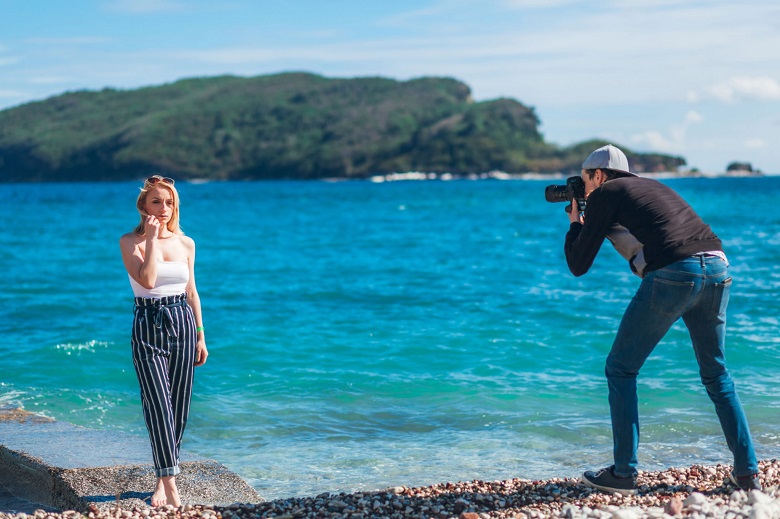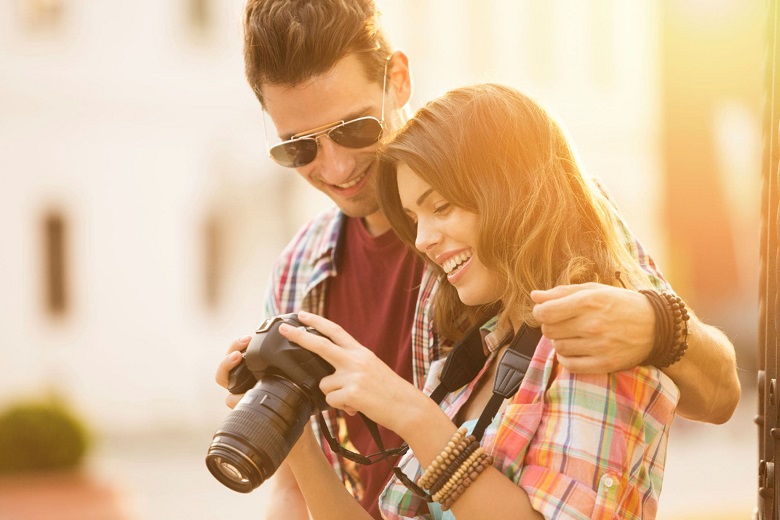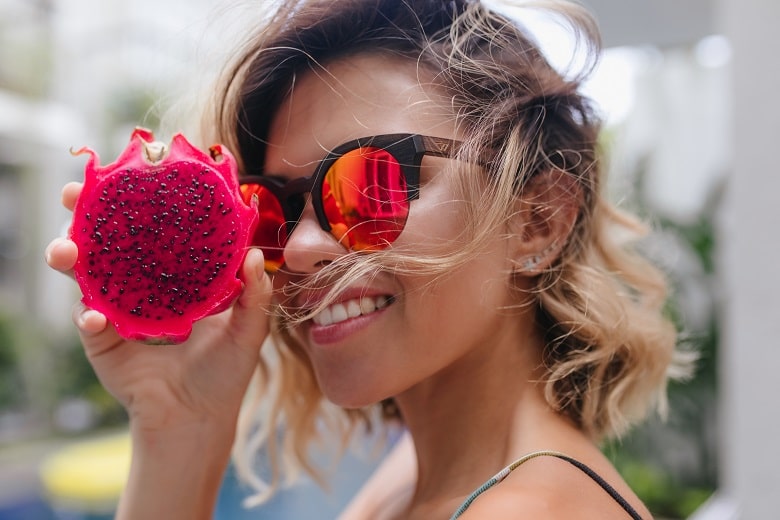With summer in full swing, there’s no better time to get out your camera and go take some photos of the beautiful season in all its glory! However, if you’re not careful, you might end up with some disappointing results. In this article, we will discuss some tips to take beautiful summer photos to make sure you get the perfect shots every time.Summer photoshoot
Summer photoshoots can be a lot of fun and if you're new to this genre of photography, you'll certainly want to make the most of them. However, making your summer photoshoot look perfect on camera isn't as easy as it sounds, and there are quite a few things you should do to get results worth sharing with your clients. Whether you're hoping to build your business as a wedding photographer or just want to get some great family photos during the summer, it's important to do everything you can to get perfect results from your shoot.
[caption id="attachment_36162" align="alignnone" width="780"]

Best locations for summer photoshoot[/caption]
Before you pick up your camera and start snapping away, however, consider the below described awesome locations that are great to use as backdrops for your summer photoshoot. You’ll be able to take tons of unique shots that are sure to impress.
Let’s be honest, beaches are awesome, and there’s no better place to take a summer photoshoot than the beach! Whether you’re an amateur photographer who wants to capture some fun summer memories or you’re shooting professionally on behalf of a client, you should take advantage of the gorgeous backdrop the sand and water provide. If you haven’t had much experience shooting on beaches, don’t worry – here are some of the best beaches for a summer photoshoot so you can be prepared before you even go out.
If you want to get in some greenery but don’t want to be indoors, head over to a hillside near you. Hillside shots can add a natural beauty to any photoshoot, and you’ll get those stunning greens in your background. Of course, with any photoshoot location, it’s important that there are plenty of other scenery options available if your main shot isn’t looking up at a lush green hillside.
While lakes are lovely to look at and are great spots for hiking, they can be death traps when it comes to photography. Reflections tend to be blurry and not sharp, so you’ll have a hard time getting clear shots in a lake. This is unless you opt to shoot into one of its many angles that don’t reflect any images at all. If you do plan on shooting in water, make sure your subjects stay still as movement will be amplified.
[caption id="attachment_36160" align="alignnone" width="780"]

Tips for a great summer photoshoot[/caption]
Summer can be an excellent time to take pictures – the weather is generally great, the beach and the countryside are stunning, and it’s warm enough that you can spend long periods outside taking shots without being uncomfortable. If you want to capture your summer holiday in its best light, though, then you need to know how to make the most of your camera as well as the scenery! Here are some top tips to help you get great results from your summer photography sessions.
When shooting in hot weather, always stay hydrated. If you’re not used to being in hot weather, it can be easy to over-exert yourself and dehydrate. Be sure that you drink plenty of water—especially if you feel tired or your skin is tingling. Dehydration will make your body feel lethargic and slow down your reaction time, meaning that you could miss important shots. It can also lead to headaches and dizziness if left unchecked. To avoid dehydration, keep a bottle of water with you at all times and regularly sip from it; don’t wait until you feel thirsty. If possible, carry an extra bottle with you so that if one runs out you have a backup handy.
Natural light is best for photographing summer events, such as parties and weddings. There are a couple of reasons for that. For one thing, it’s simply beautiful—especially after sunset when there’s a golden glow in the sky. But natural light also does wonders for your portraits. Because you can see what you’re shooting, you can position yourself more effectively to get great shots. And because you aren’t relying on artificial lighting, your subjects won’t be blinded by flashes or have their faces washed out by bright lights. Best of all, natural light allows you to take pictures without having to adjust settings on your camera or use flash equipment—which means less work for you!Stay Close
The one of the best thing to get great results during summer photoshoot is to follow your subject closely. If you’re taking a photograph of someone on a busy street, get as close as possible without intruding into their personal space. This way, you can capture sharp details and avoid having distracting backgrounds in your image. However, if you’re photographing an object rather than a person, you might have to be further away from it—but getting close will still allow for better shots than standing far away from it. Remember that depth of field refers to how much or how little of an image is in focus. The closer you are to your subject, the more likely everything in front of and behind it will be out of focus.
When your subject is right in front of you, there’s no reason not to use a wide aperture. Any lens with an aperture of f/2.8 or wider can capture professional-looking shots even in bright light. A few common options include 35mm, 50mm and 70–200mm lenses. If you own a point-and-shoot camera with interchangeable lenses, purchase one of these for capturing outdoor summer shots during your next vacation. Be sure to keep it on hand at all times so that you don’t miss any opportunities.Keep Shutter Speed Low
Low shutter speeds are great for summer shooting in bright conditions because they allow more light into your camera. However, high shutter speeds (1/500th of a second and higher) also have their place when shooting outdoors in warm weather. High shutter speeds are ideal for shooting waterfalls, waves crashing against rocks and other moving water features. They’re also useful for stopping fast-moving subjects such as kids playing sports or pets running around outside.Avoid Over/Under Exposures
A common mistake among amateur photographers is over/under exposure to their images. Make sure you're aware of whether your camera is set up correctly for different summer shooting conditions. This will result in more well-exposed photos, and allow you to take control of your camera while shooting. Additionally, it is important to make sure that when photographing subjects at night, you don't expose your shot too much so that it loses all colour or detail. On the other hand, overexposing a photo can also cause issues; instead, make sure that you don't underexpose too much so that it loses detail in areas such as hair or leaves on trees.Choosing a Focus
Choose an area of focus in your images, such as a person's face or part of their body. This will help draw your viewer's eye towards that detail and create a more interesting image during summer photoshoot. It can also be used to give context to your subject – for example, by focusing on their eyes, you can show what they are looking at or thinking about. Alternatively, you could choose a wider shot with multiple subjects but without any one main focus – capturing them all within one shot allows viewers to make up their minds about who is important in the picture.Take Panoramas
Panoramas allow you to combine multiple photos into one wide-angle shot. This type of photo is perfect for capturing landscapes and large, open spaces such as beaches and fields. While professional photographers use panoramic cameras, anyone can create them on their smartphone. To do so, simply hold your phone vertically while taking a series of photos in landscape mode (holding your phone horizontally). Next, upload these images to an app like Adobe Photoshop Express or Google Photos (which both have free versions) and merge them using one of these apps' panorama features. Voilà! Your very own summer photography panorama!Embrace The Sun
Summer is a great time for photography, but you should be careful not to have your pictures overly affected by sun flare. The sun can cause unsightly lens flare, especially when shooting with a wide-angle lens or at close distances. To avoid photos that are ruined by sunlight, check out our guide on how to reduce flare. It's also worth looking at some of your favourite photographers online and seeing how they handled different light conditions. It may help you develop your unique style! Know Your Settings
[caption id="attachment_36161" align="alignnone" width="780"]

Know Your Settings[/caption]
In manual mode, you can change camera settings based on your surroundings for summer photoshoot. The shutter speed determines how long your camera’s shutter is open, which in turn affects lighting conditions and depth of field. A faster shutter speed will freeze motion but may overexpose your shot, while a slower speed might cause your subject to be blurry if you move during a shot. Play around with various settings and see what different effects they have on your photos!Vary Your Angles
Change your angle often and capture a variety of perspectives. Add some variety to your portfolio by taking photos from all different angles; above, below, side-to-side and straight-on. Try experimenting with different heights, too – standing on a chair or lying down. Just be sure you have permission before you start climbing into places where you might get hurt (like on top of an enormous rock or near an active train station). If you’re planning to photograph people, ask them to stand up and turn around so that you can shoot from behind as well as in front. And don’t forget about capturing action shots – running children are particularly fun subjects for fast shutter speeds!Be Patient
To get a great shot, sometimes you just have to wait for it. If you’re trying to capture that perfect action shot of someone diving into a pool or getting caught in mid-jump, be prepared to set your camera up and wait. It could take hours, but it’s worth it. Once they do leap (or fall), press your shutter button at just the right moment. A good tip is to use burst mode so you can snap multiple shots at once. This way, if one isn’t quite as good as you hoped, there are other options available. Plus, if there are lots of people jumping around in front of your lens then by using burst mode, you can capture more than one person jumping in different directions. This will give you more options when editing later on!Set a theme
Themes make your pictures feel as though they're a cohesive unit and can also help tell your clients a story. The right theme can add weight to your images and make them more memorable—for both you and your clients. Below are five themes we've had success with, so use them as inspiration when it comes time to plan your next photo shoot. Then, once you have an idea in mind, search Flickr for ideas from other photographers who have taken similar pictures.Stay active
Staying active can help you keep your strength up during a photo shoot, so take a moment to stretch or do some light cardio. This will not only make you feel good, but it will show in your final shots. If you’re planning on shooting for hours, eat something light to keep your energy up (hint: carbohydrates are your best bet). You should also make sure to stay hydrated and drink plenty of water.Style your subject
There are few things more important than having a subject that looks good in their photos. Make sure to pick a style that works for your subject’s body type and personality. Don’t try to dress someone up into something they wouldn’t normally wear. Instead, find what makes them look great, and highlight it with clothes that fit well. If you don’t know how to do that, ask a friend or family member who knows fashion well (or hire a stylist). You can also check out sites like Pinterest or Tumblr for inspiration on different styles of clothing.Backgrounds
To ensure your model or product isn't lost in a sea of similar images, choose an interesting backdrop. For instance, if you're shooting a model on a beach, she may be dwarfed by high-rises that make her appear tiny. If you shoot her against a plain background, she will appear closer to viewers because there is a less visual distraction. You can also use your own body as a prop. A photographer who takes photos at events and parties often uses herself as a backdrop—for example, leaning against a wall or sitting on a table. This helps give photographs more context and makes them feel more authentic.Summary
As the weather gets warmer, many people take the opportunity to do summer photoshoots with friends and family. As an experienced photographer, you know that preparation is key to getting the best shots; you know what time of day is ideal, what sort of lighting to expect, and how long it will take to get the shots you want. Still, while these pieces of advice are great as far as they go, they are enough to ensure that your summer photoshoot will be a success.  Best locations for summer photoshoot[/caption]Before you pick up your camera and start snapping away, however, consider the below described awesome locations that are great to use as backdrops for your summer photoshoot. You’ll be able to take tons of unique shots that are sure to impress.
Best locations for summer photoshoot[/caption]Before you pick up your camera and start snapping away, however, consider the below described awesome locations that are great to use as backdrops for your summer photoshoot. You’ll be able to take tons of unique shots that are sure to impress. Tips for a great summer photoshoot[/caption]Summer can be an excellent time to take pictures – the weather is generally great, the beach and the countryside are stunning, and it’s warm enough that you can spend long periods outside taking shots without being uncomfortable. If you want to capture your summer holiday in its best light, though, then you need to know how to make the most of your camera as well as the scenery! Here are some top tips to help you get great results from your summer photography sessions.
Tips for a great summer photoshoot[/caption]Summer can be an excellent time to take pictures – the weather is generally great, the beach and the countryside are stunning, and it’s warm enough that you can spend long periods outside taking shots without being uncomfortable. If you want to capture your summer holiday in its best light, though, then you need to know how to make the most of your camera as well as the scenery! Here are some top tips to help you get great results from your summer photography sessions. Know Your Settings[/caption]In manual mode, you can change camera settings based on your surroundings for summer photoshoot. The shutter speed determines how long your camera’s shutter is open, which in turn affects lighting conditions and depth of field. A faster shutter speed will freeze motion but may overexpose your shot, while a slower speed might cause your subject to be blurry if you move during a shot. Play around with various settings and see what different effects they have on your photos!
Know Your Settings[/caption]In manual mode, you can change camera settings based on your surroundings for summer photoshoot. The shutter speed determines how long your camera’s shutter is open, which in turn affects lighting conditions and depth of field. A faster shutter speed will freeze motion but may overexpose your shot, while a slower speed might cause your subject to be blurry if you move during a shot. Play around with various settings and see what different effects they have on your photos!
 admin
admin








